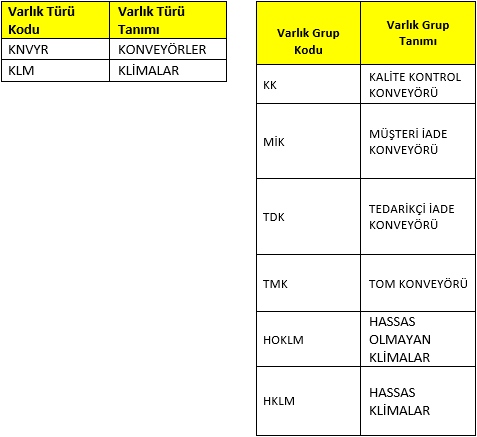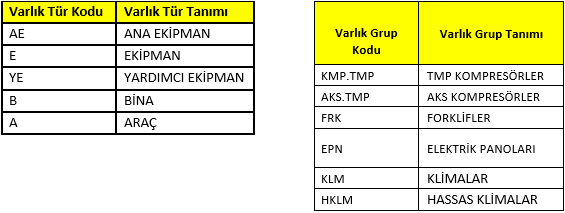How Should the Entity Template Be Filled In?
1) We use the definitions we define in the business, consumable, department, asset type, asset group fields when we define assets on the assets page.
2) The codes of each description we define should be specific, not repetitive.
3) It is mandatory to fill in the fields painted in yellow on each page.
4) I define my own locations in my system in the areas of business, consumption, section. I use those locations to define equipment.
5) It is my equipment that I follow asset maintenance and failures, have high costs, and embezzle my personnel.
6) The meaning of asset types and asset groups is this: Let me divide my assets into types and groups so that when I do a cost review, I can see which asset types and groups I spend the most. In other words, defining my asset types and asset groups will appear in my reporting.
I do not select these definitions when opening a work request or work order (location, asset type, asset group). Because I've already saved this information to the entity when defining an asset, this information will come automatically when I perform an asset selection on the work order/work request. This information is necessary for me to identify my equipment to the system.
Entity types are a more general concept than entity groups. So what should my asset types and entity groups look like?

For example: If I want to see how much I have spent on my quality control conveyors in reporting, I can use the asset groups; In general, if I want to see how much I have spent on my conveyors, I can report from asset types. My asset types can be to encompass my entity groups.
Another example:

Or my entity types, my entity groups can act independently of each other. For example, I track the costs I make to my main equipment, equipment, auxiliary equipment in my asset types. In my asset groups, I keep track of my machines (according to brand, type, mode of operation) separately by writing:
